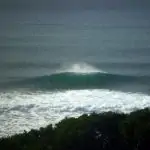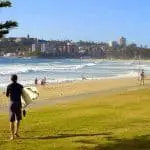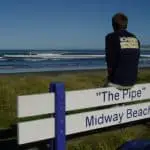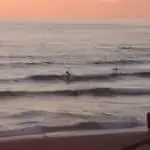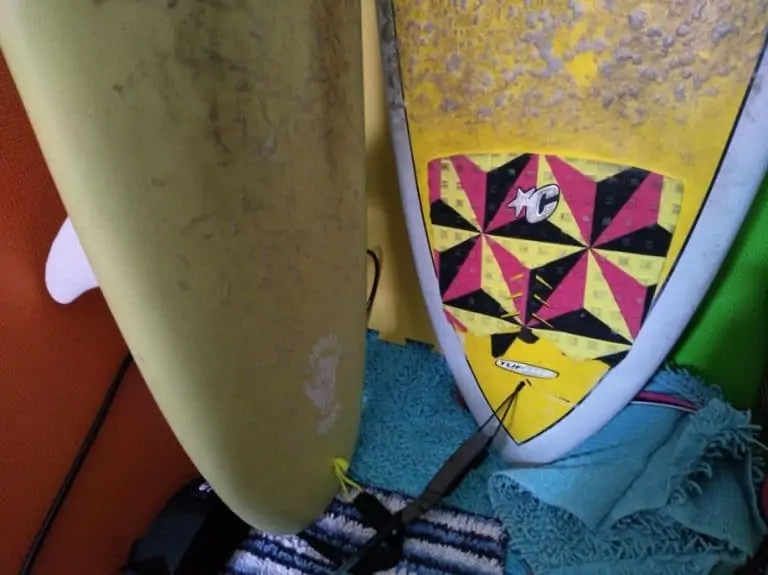Wind for Surfing Explained: Beginnner’s Guide
What wind is best for surfing?
The best winds for surfing are light offshore winds up to 5 knots, or none at all. Offshore winds are when the wind blows from the land out to sea (so the wind comes off the land ‘in a direction away from the shore’). This is rare in many places.
But don’t worry, you can surf in most wind conditions – let me explain!
Is wind bad for surfing?
Strong winds over about 10 knots can be bad for surfing but light winds are not. It’s rare to have no wind so most surfers surf with some wind often with no problem. However, if the winds get really strong, it makes the waves harder to surf and balancing on your board is more difficult.
Strong Winds Make Surfing Harder
The Sea’s Surface is Choppy in Strong Winds, Making it Harder to Surf
Strong winds leave the sea’s surface rough and ‘choppy’, where it is visibly agitated and rough, just like many of us have seen many times before. These strong winds are also bad for surfing because this chop on the surface means the waves break less predictably and the rides you get are bumpier and slower.
Riding a surfboard on a choppy sea is a bit like riding over speed bumps in a car; it slows you down and can really take it out of your ‘vehicle’ if you don’t handle it right!
Check out my tips for surfing choppy waves for more!
Strong Winds Make Waves Break Unpredictably
Strong winds that are not offshore make waves break in more unpredictable ways, making them harder to read for surfers. This means that it’s harder to find a ‘green wave’ to ride along the face since the wave closes down and you will have shorter rides.
It’s also harder to choose your waves because you can’t really see which ones will break quickly or which waves will stay open and let you ride along the face since the strong winds just made life more difficult for surfers!
Onshore Winds Don’t Look Good But Aren’t Always Bad for Surfing
Onshore winds blow from the sea towards the land/shore and flatten the waves for surfing. They are the most common winds around the world and usually start around mid-morning until just before dusk in most surf spots around the world.
This is why most surfers consider the morning the best time of day for surfing, along with a few other factors, as explained in my guide in the link shown here.
Onshore winds aren’t all bad news for surfing since they can be good for people who want to try and practice airs because it helps the board stick to the rider’s feet, rather than blowing it away from them in an offshore wind.
Can you still surf onshore winds?
Most sports are still fun to surf in an onshore wind so don’t be put off by the aesthetics of onshore days. Onshore waves might not look great but they are still plenty fun to surf and ride, so usually it’s best just to get out there.
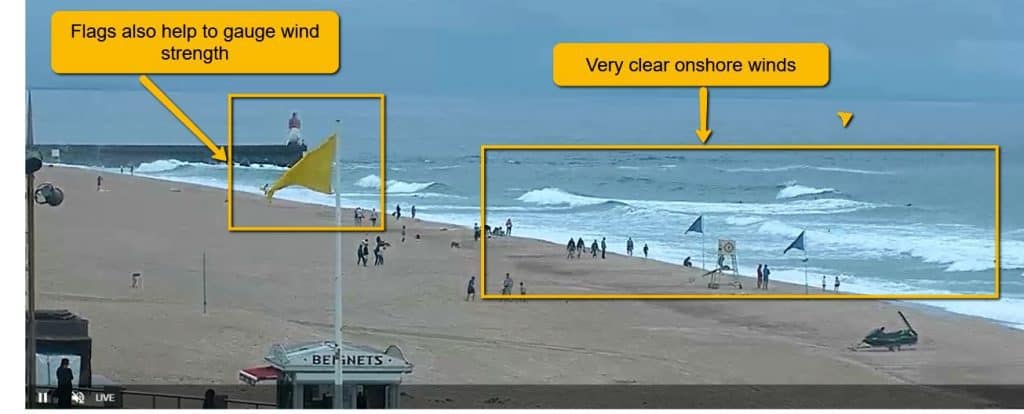
Surf spots most affected by onshore winds are usually reef breaks or hollow waves as they will not often break properly in an onshore wind but beach breaks and even point breaks are still pretty good with these winds.
Cross-shore Winds Are the Worst for Surfing
If a wind is ‘cross shore’, either blowing out to sea or in toward shore at a diagonal angle from the shoreline, then the waves will break in strange ways. These mean that they cause bumps in the waves without having the effect of holding up the waves like offshore winds, being the worst of both worlds.
Surfers trying airs might like a cross-onshore wind, however, as it can help to offer bumps or ‘ramps’ for launching off, but that is for very advanced surfers who will know their ideal conditions well already.
Offshore Winds are the Best for Surfing
Offshore winds are better for surfing because they help to give the waves a good shape and makes the wave break evenly. The offshore wind blows directly from the beach out to sea and makes the waves break in the best way possible, with a great aesthetic, too.
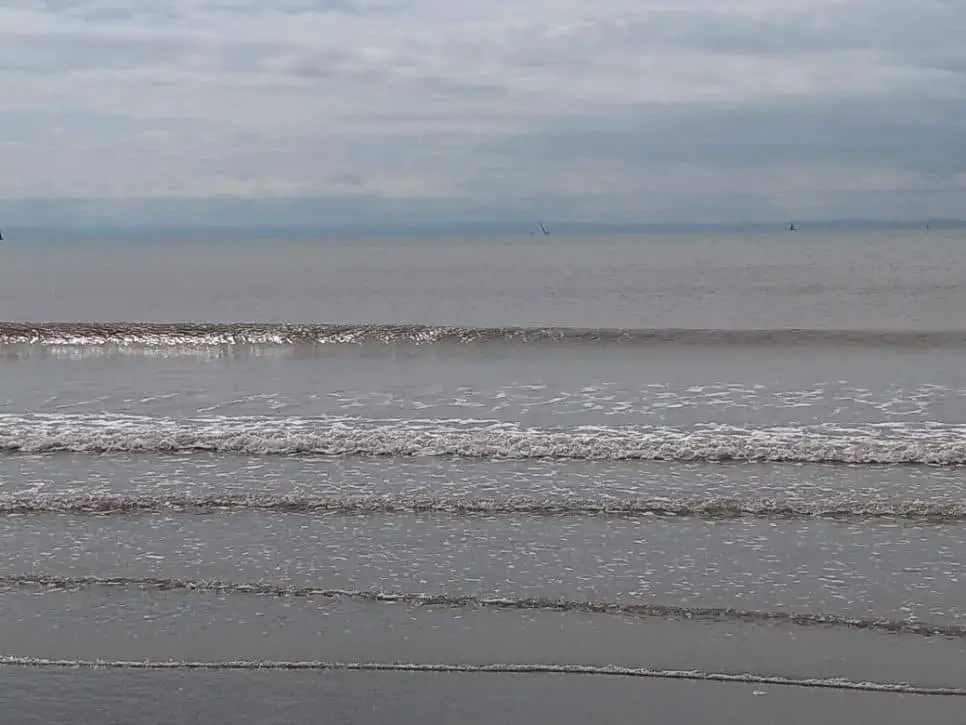
Notice how the surface of the wave is lightly ‘ruffled’ by the winds, a beautiful sight for surfers.
Strong Offshore Winds Can Be a Problem for Surfing
If too strong, offshore winds are a problem for surfing because it makes it harder to get into the waves you are trying to catch. This means you have to use more energy paddling as you are fighting against the wind to get into the wave and down the face.
Strong offshore winds are visible with huge white sprays coming off the top of each wave and blowing out to sea. This wind is the least common in most places so is not something you really need to worry about
How can you tell if wind is offshore?
Identifying Offshore Winds at the Beach
Offshore winds are clearly visible at the beach when you look at the waves and see the white spray going up and over the back of the waves out to sea as the wave breaks. This has a little spray that gives the waves a nice aesthetic, too.
Most of the classic photos you see of waves show waves with offshore winds so look at those and take notes when you next get to the beach to see if the waves are offshore!
Identifying Offshore Winds in a Surf Forecast
If the wind arrow on your surf forecast points from the land towards the sea in the right direction of your beach, then you will see offshore winds when you go. You can therefore see offshore winds in a surf forecast by looking at the wind arrow and then comparing it to the direction/aspect of the beach you want to surf.
Remember that the winds change so even if it looks offshore in the forecast, it might not be when you get to the beach.
What wind speed is bad for surfing?
Wind speeds below about 10 knots are usually fine for surfing, but 0-5 knots is the most likely good range for most spots. It’s rare to have no wind at all but the lower the wind speed the better. The best time to surf is usually in the morning for that reason.
Can you surf in strong winds?
You can surf in strong winds over 10 knots but it makes it more difficult to paddle, catch and ride waves. Strong offshore winds push you out to sea, making catching waves harder, while other strong winds simply make waves bumpy and harder to ride.
In strong gusts, it can be very hard to stand up and ride a wave, too, as the gusts can often be strong enough to blow you over, even when on dry land!
Be careful with controlling your surfboard in strong winds since the
This is where having protection can come in handy, so be sure to check out my guide to surf helmets to make sure you’re fully protected! There’s also my surf safety equipment and tips post, too, with yet more helpful gear and ideas!
